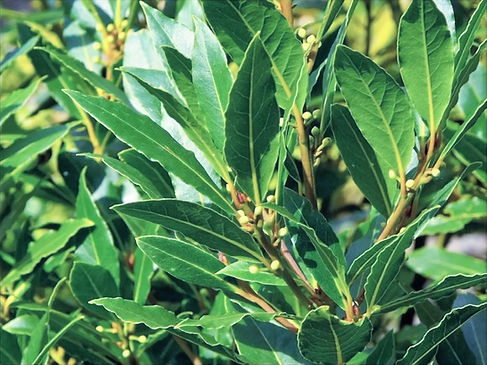
Bay Leaves: A Chef's Classic
Fragrant and timeless, bay leaves bring gentle, woody notes that transform slow-cooked dishes. A single leaf can turn a simple soup or sauce into something rich and memorable.
Bay Leaf or Laurel
Laurus Nobilis
What is Bay Leaf?
Bay leaves are an essential seasoning herb used to build layers of flavour in long-cooked dishes. They are typically added whole to soups, stews, sauces, and braises, then removed before serving, as their leathery texture is not pleasant to chew.
The aromatic compounds in bay leaves—cineole and eugenol—slowly release during cooking, enhancing savoury dishes with a gentle bitterness and fragrance.
Beyond the kitchen, bay laurel has symbolic importance, once woven into crowns in Ancient Greece and Rome as a mark of honour and victory.

Flavour and Taste
Bay leaf has a subtle, herbal flavour with hints of pine, eucalyptus, and a mild bitterness that adds depth and complexity to a dish. While not meant to be eaten directly, it infuses soups, stews, sauces, and braises with a gentle, aromatic background that rounds out other flavours.
Facts about Laurel (Bay Leaf)
FAQ
How Does Bay Leaf Taste?
Bay leaves add a subtle, woody aroma and depth of flavour to soups, stews, sauces, and braises. They release their fragrance slowly as dishes simmer.
What does a bay leaf do in cooking?
Bay leaves add a subtle, woody aroma and depth of flavour to soups, stews, sauces, and braises. They release their fragrance slowly as dishes simmer.
Can you eat bay leaves?
It’s best to remove bay leaves before serving — they’re tough and can be sharp if chewed, though not toxic.
Is there a difference between fresh and dried bay leaves?
Yes — fresh leaves have a milder, more floral aroma, while dried leaves are stronger and more concentrated.
How should bay leaves be stored?
Store dried leaves in a sealed jar in a cool, dark place. Fresh ones can be frozen or refrigerated to preserve flavour.

Recipe Idea:
Classic Tomato Sauce with Bay Leaves
-
Sauté onions and garlic in olive oil.
-
Add canned tomatoes, salt, pepper, a pinch of sugar, and 1–2 bay leaves.
-
Simmer gently for 45 minutes, remove the leaves, and serve over pasta or use as a base for pizza.
